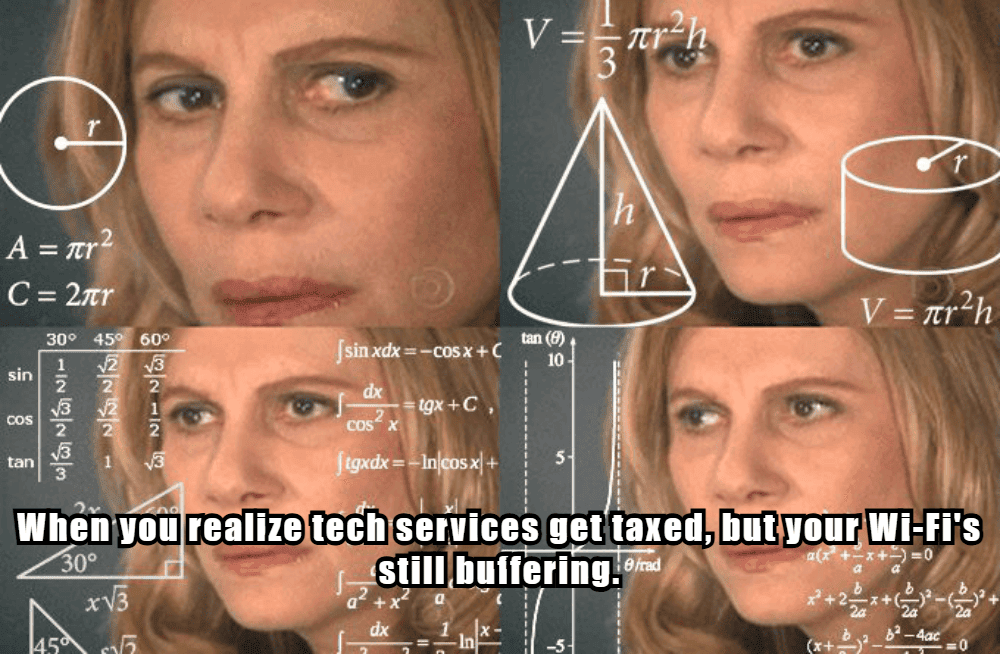The digital transformation of commerce has fundamentally changed how small businesses operate—and how they are taxed. As technology services like SaaS (Software as a Service), cloud computing, and digital goods become integral to business operations, understanding sales tax obligations is more complex and critical than ever. This article explores the evolving landscape of sales tax on technology services, the challenges facing small businesses, and strategies for compliance in 2025.
The Expanding Scope of Sales Tax on Technology Services
Historically, sales tax applied mainly to tangible personal property. However, with the rise of the digital economy, many states have expanded their tax codes to include a wide array of technology services. This includes:
Cloud computing and SaaS: Many states now tax remotely accessed software, cloud storage, and application hosting.
Digital goods: Products like e-books, audiobooks, apps, and streaming services are increasingly subject to sales tax.
IT and consulting services: Some states tax website development, IT support, cybersecurity, and related tech services.
The result is a patchwork of regulations that vary significantly by state. For example, Hawaii and New Mexico broadly tax most services, while California and Colorado tax very few. States like Texas and Utah have recently clarified that many cloud and SaaS services are taxable.
Key Concepts: Nexus, Sourcing, and Taxability
1. Nexus
Nexus refers to the connection between a business and a state that obligates the business to collect and remit sales tax. Traditionally, having a physical presence (like an office or employees) establishes a nexus. Today, economic nexus laws are prevalent: if your business exceeds a certain sales threshold or number of transactions in a state, you may be required to collect sales tax there, even without a physical presence.
2. Sourcing Rules
Sourcing determines which location’s tax rate applies to a transaction. There are two main approaches:
Origin-based sourcing: Tax is based on the seller’s location.
Destination-based sourcing: Tax is based on the buyer’s location.
Most states use destination-based sourcing for digital services, meaning you must apply the tax rate of your customer’s location, which can include state, county, and city taxes.
3. Taxability
Not all technology services are taxed equally. The taxability of SaaS, cloud services, and digital goods varies by state and sometimes by the nature of the customer (e.g., business vs. consumer, nonprofit, educational institution). Some states provide exemptions or special rules, such as taxing only a portion of SaaS revenue.

The Compliance Challenge for Small Businesses
The complexity of sales tax compliance for technology services stems from:
Frequent law changes: States regularly update tax codes to capture revenue from new digital business models.
Multi-jurisdictional sales: Selling across state lines means tracking and applying the correct tax rates and rules for each jurisdiction.
Recordkeeping and reporting: Businesses must maintain detailed records of sales, tax calculations, exemptions, and remittances to survive audits and avoid penalties.
The administrative burden is significant. Many small businesses report using dedicated sales tax software, spreadsheets, or third-party advisors to manage compliance. Non-compliance can result in costly fines, audits, and reputational damage.
How Technology Can Simplify Sales Tax Compliance
Sales tax automation has become essential for small businesses dealing with technology services. Modern sales tax software offers:
Automated tax calculation: Calculates the correct sales tax based on product/service type and customer location.
Multi-jurisdiction tracking: Monitors sales across states and alerts you when you cross nexus thresholds.
Filing and remittance: Generates and sometimes files sales tax returns, reducing administrative work.
Exemption management: Stores and applies exemption certificates for qualifying customers.
Popular solutions include Avalara, TaxJar, Vertex, Sovos, and TaxCloud, each offering integrations with accounting and e-commerce systems, real-time updates for changing tax laws, and robust reporting tools.

Benefits of Sales Tax Software
| Benefit | Description |
| Accuracy | Reduces errors in tax calculation and filing. |
| Time savings | Automates manual processes, freeing up resources. |
| Scalability | Handles increased transaction volume and complexity as you grow. |
| Audit risk reduction | Maintains records and compliance, lowering audit risk. |
| Improved customer experience | Ensures correct tax is charged, building trust. |
| Integration | Works with existing POS, accounting, and e-commerce systems |
Case Study 1: Multi-State SaaS Compliance
A SaaS company discovered unreported sales tax liabilities in multiple states. By implementing a multi-state compliance strategy, including voluntary disclosure agreements (VDAs) and tax software, the company remediated its exposure, avoided penalties, and streamlined ongoing compliance.
Case Study 2: $900,000 Sales Tax Savings
A cloud-based SaaS business worked with tax professionals to review and remediate its sales tax exposure, resulting in $900,000 in savings. The business then implemented Avalara’s AvaTax for automated sales tax rate management, reducing compliance stress and future risk.
Case Study 3: Annual Compliance Reviews
A B2B SaaS company engaged tax professionals for annual assessments to ensure its sales tax software was correctly configured and up-to-date with changing regulations. This proactive approach minimized liabilities and ensured ongoing compliance.
Best Practices for Small Businesses
1. Stay Informed
Sales tax laws change frequently. Subscribe to updates from state tax authorities, consult with tax professionals, and regularly review your compliance strategy.
2. Leverage Technology
Invest in sales tax automation tools that integrate with your sales and accounting systems. This is especially important for businesses selling in multiple states or online.
3. Understand Your Products and Services
Know how your offerings are classified in each jurisdiction. Is your SaaS product taxable? Are your IT consulting services exempt? Check state-specific rules and apply exemptions where eligible.
4. Track Nexus
Monitor your sales in each state to identify when you cross economic nexus thresholds. Register for sales tax permits as soon as you establish nexus.
5. Maintain Strong Recordkeeping
Keep detailed records of all sales, tax calculations, exemption certificates, and remittances. This will be invaluable in the event of an audit.
6. Consult Professionals
Work with accountants or sales tax consultants who understand the technology sector. They can help you navigate complex situations and avoid costly mistakes.

The Economic and Competitive Impact
The expansion of sales tax on technology services has significant economic implications:
Increased costs: Small businesses face higher expenses for essential tech services, potentially squeezing margins and limiting growth.
Competitive disadvantage: States with aggressive tech taxes may lose businesses to neighboring states with more favorable tax environments.
Consumer impact: Higher costs are often passed to customers, potentially widening the digital divide.
Looking Ahead: Trends for 2025 and Beyond
More states expanding economic nexus laws: Expect further adoption and tightening of economic nexus thresholds, increasing compliance obligations for remote sellers.
Broader taxation of digital goods and services: States are likely to continue updating tax codes to capture revenue from new digital business models, including AI and blockchain services.
International considerations: Businesses selling abroad must also navigate VAT and GST obligations, adding another layer of complexity.
Emphasis on automation and digital compliance: As regulations evolve, automation will become even more critical for compliance and scalability.
Conclusion
Sales tax on technology services is a moving target, shaped by rapid technological change and evolving state and local tax policies. For small businesses, the stakes are high: compliance failures can mean penalties, audits, and lost credibility, while effective management can unlock growth and peace of mind.
By staying informed, leveraging technology, and seeking expert guidance, small businesses can navigate this complex landscape confidently, turning sales tax compliance from a costly headache into a strategic advantage.
Key Takeaways:
- Sales tax on technology services is expanding and varies by state.
- Nexus, sourcing, and taxability rules are critical to compliance.
- Automation tools are essential for managing complexity and reducing risk.
- Regular review, professional advice, and strong recordkeeping are best practices for success.
Stay proactive, stay compliant, and let technology work for you as you grow your small business in the digital age.


